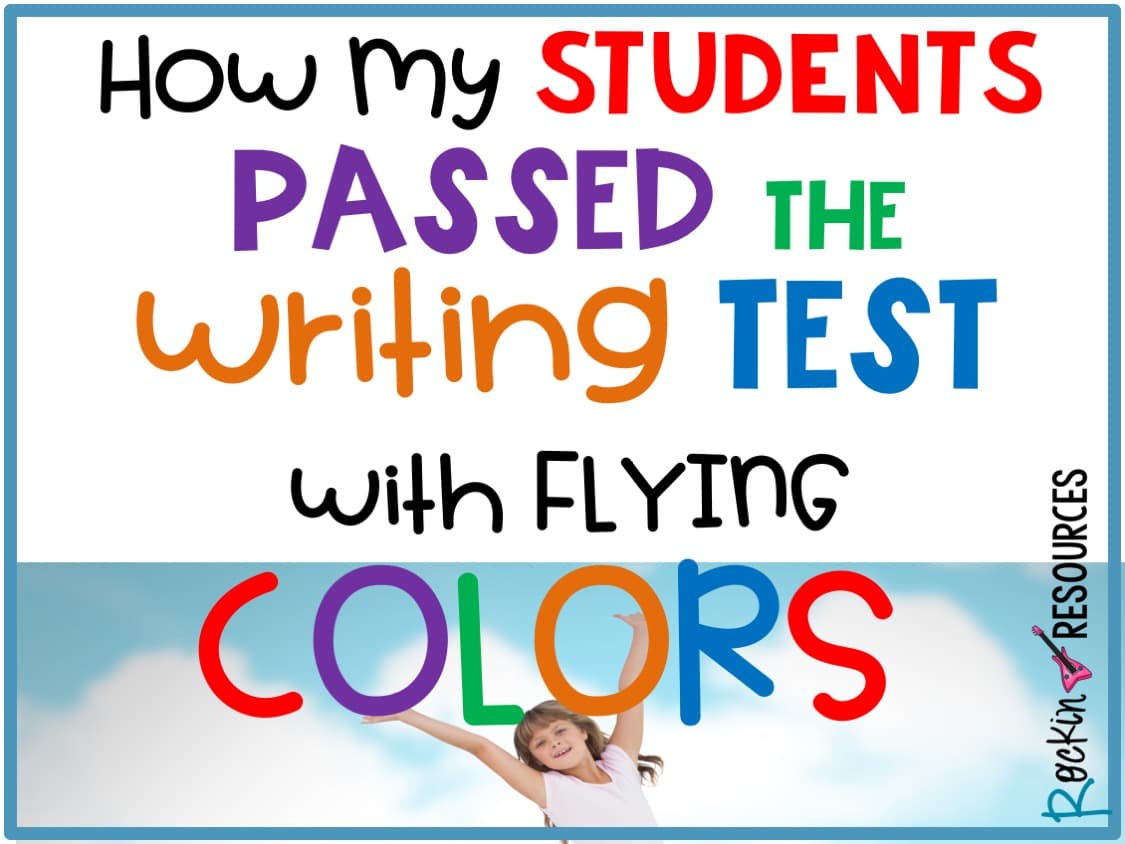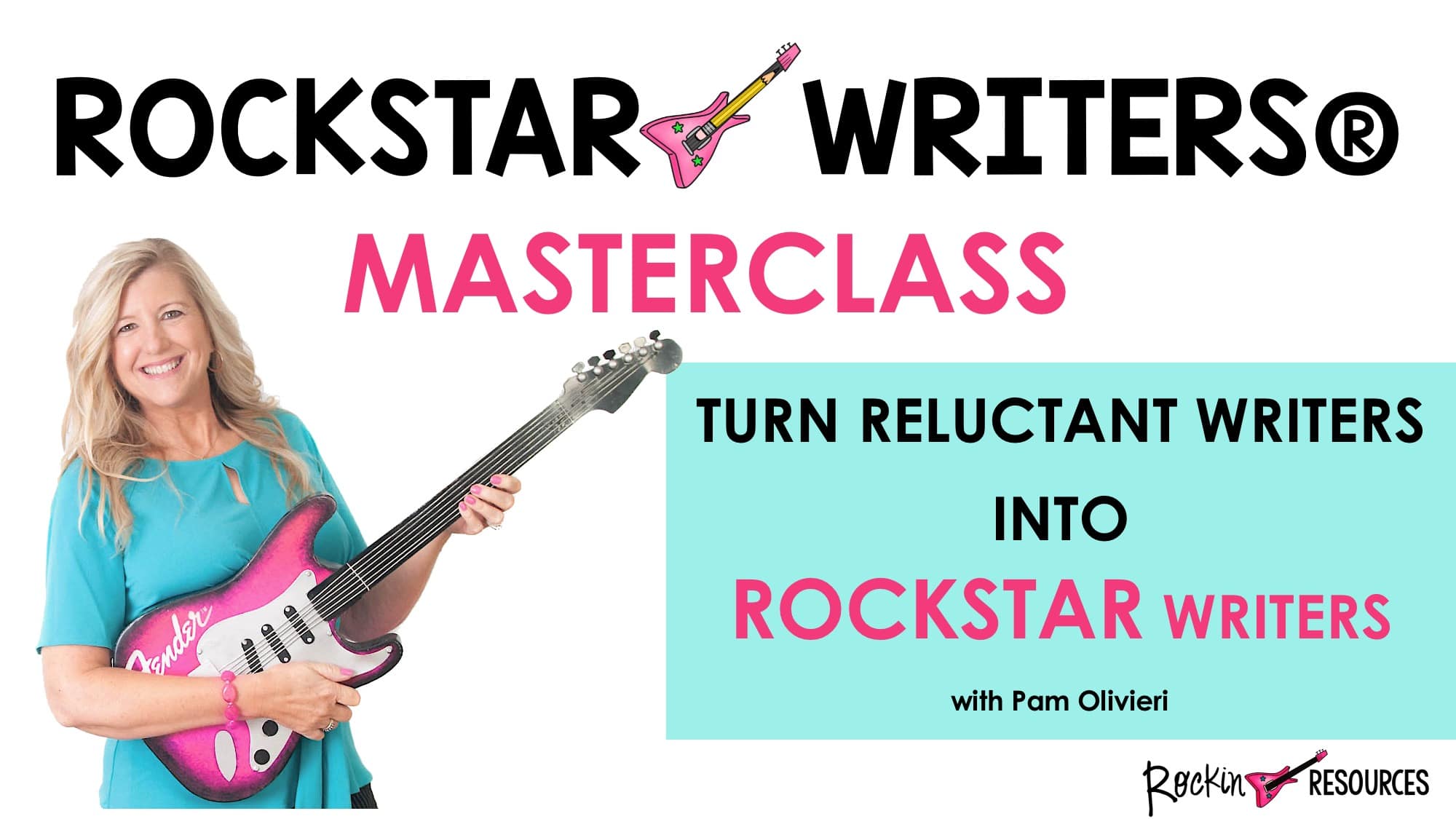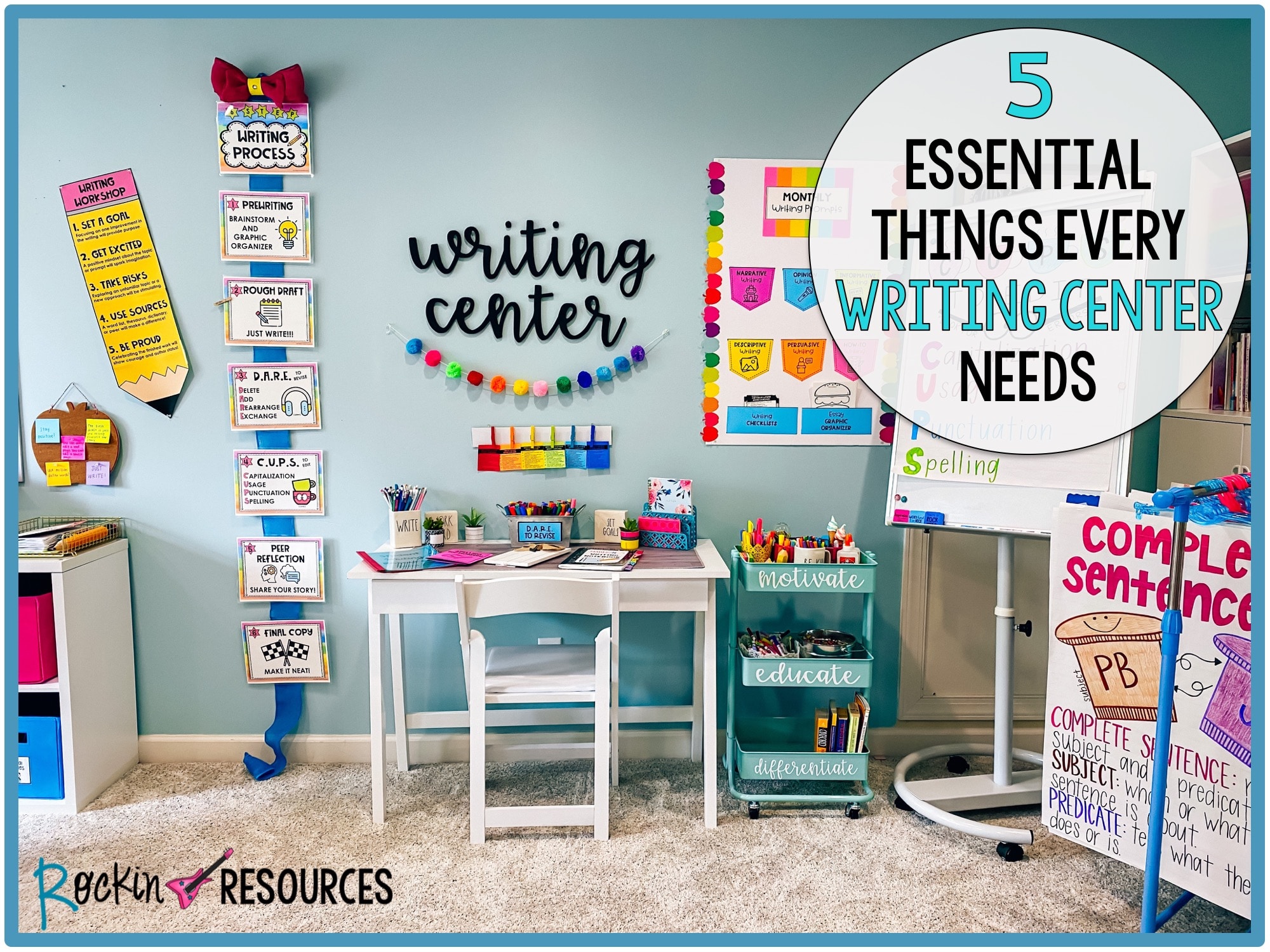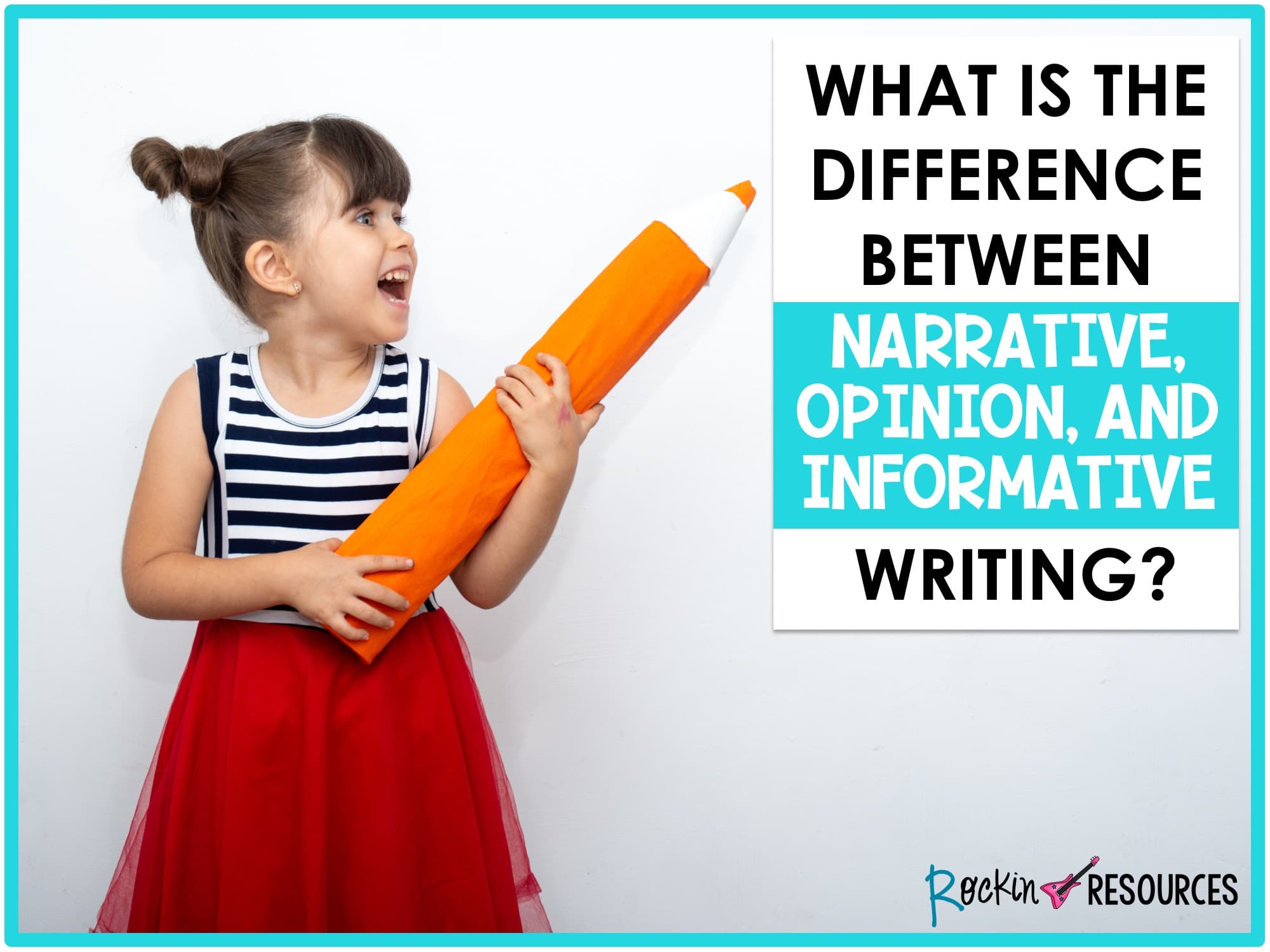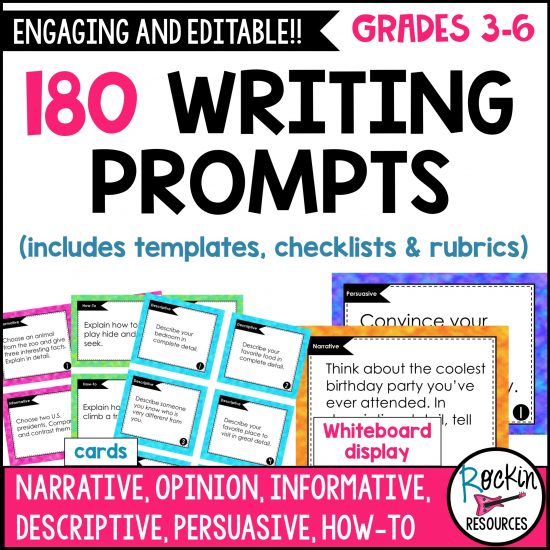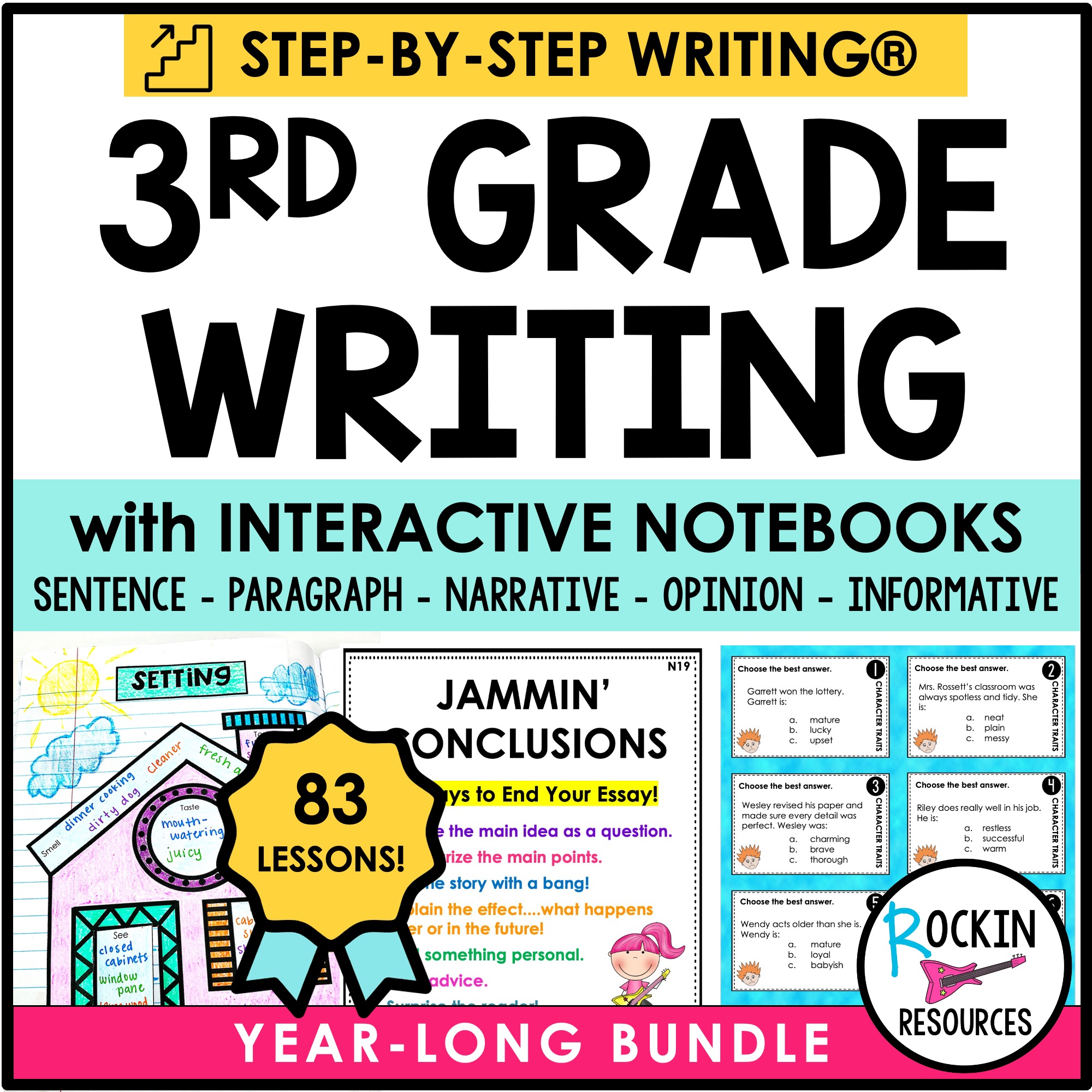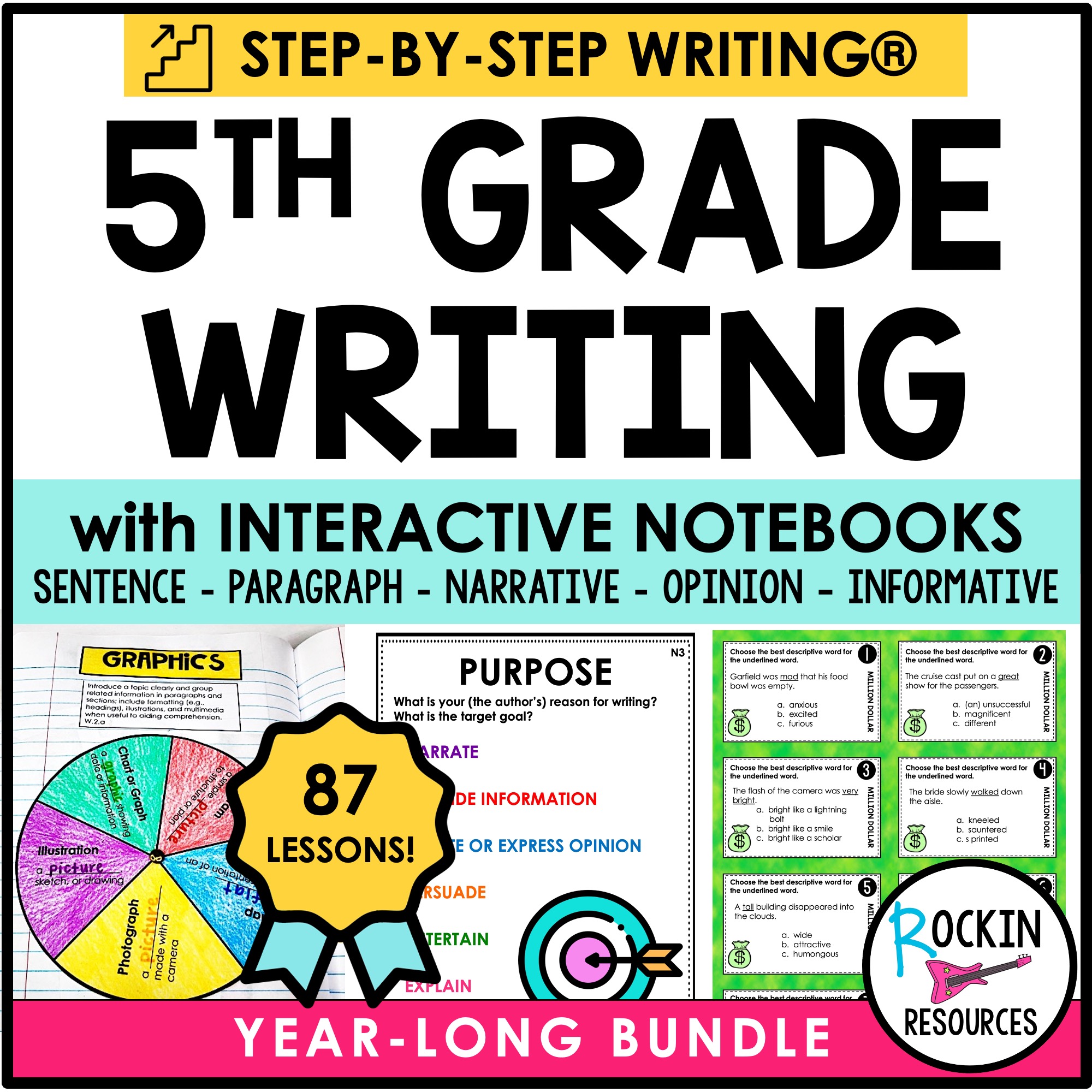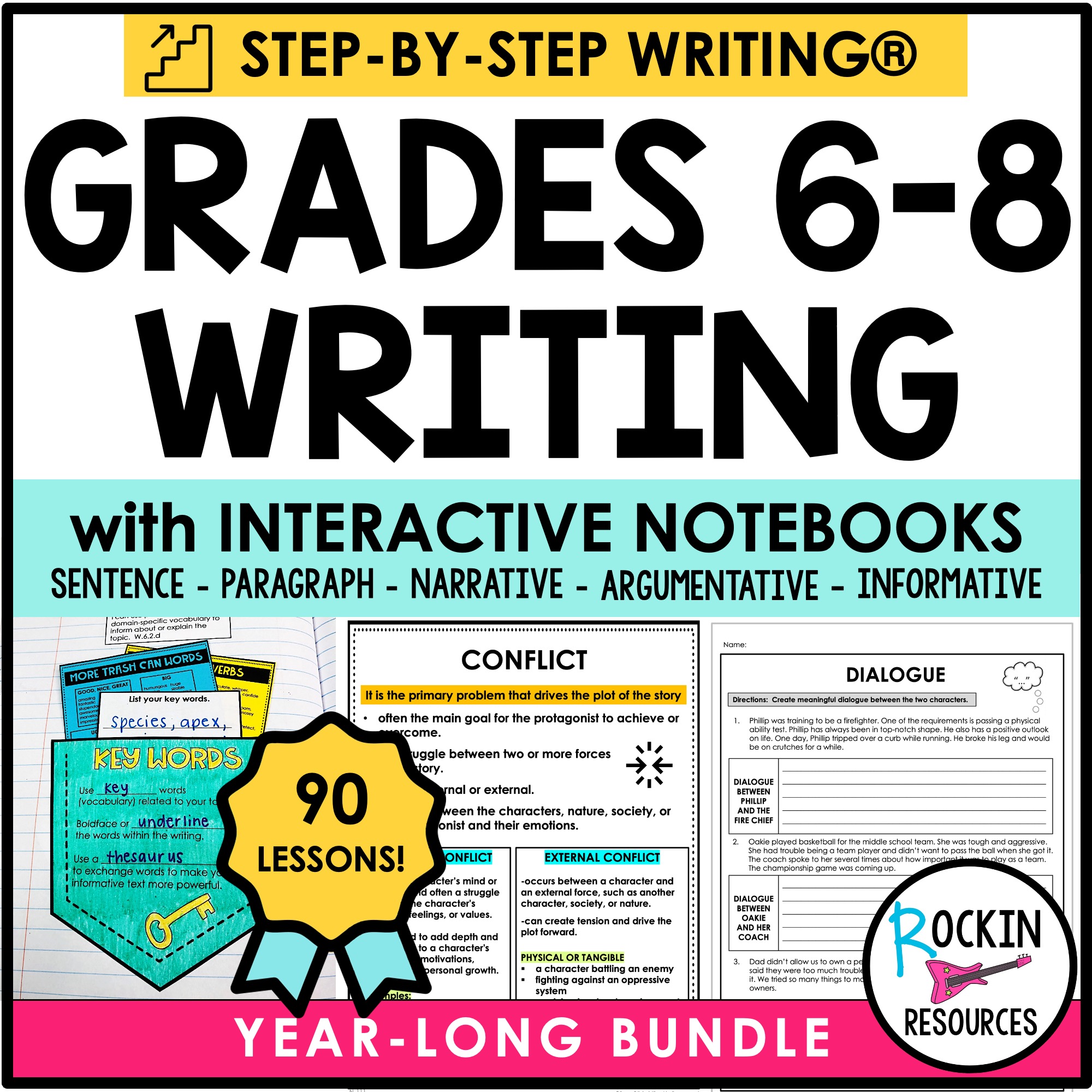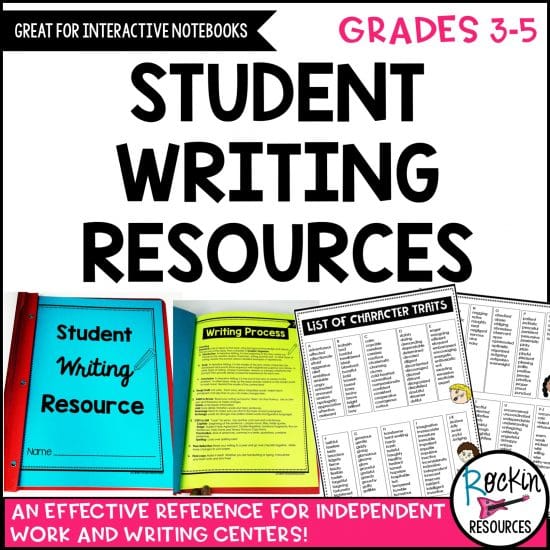I will explain my theory for you to use in your classroom FREE of charge and if you don’t want the hassle of creating your own lessons, then you can click the NO-PREP program with everything included below.
What strategy is most effective in teaching writing?
If I can share one highly effective strategy, it would be scaffolding. When you teach students to write step-by-step, they will see their writing evolve and you will all have an ah-ha moment together. Always start with the basics of sentence structure and paragraph writing. Then start jammin’ an essay writing using the scaffolded mini-lessons through the writing process. I know it can be frustrating to work on one piece of writing for an extended period of time, but the end results will bring you the ULTIMATE WRITING PERFORMANCE! Give your students a writing prompt and follow the STEPS below for that particular type of writing. Work on the same prompt through each of the steps. It will take you through the writing process in an order that makes the most sense and it will help students remember the components needed for an effective final copy.
What does a year of this program look like?
First of all, be ready to start with a positive attitude! If your students see you excited, then they will be curious and want to jump right in on the excitement!
Always start with a basic foundation of:
1. Sentence Writing
(Subjects, Predicates, Fragments, Complete Sentences, Run-Ons, Compound Sentences) – Assess progress and have students record their scores on a tracking form.
2. Paragraph Writing
(Topic Sentences, Relevant Details, Clinchers, Hamburger Model) – Assess their progress and have students record their scores on a tracking form.
3. Writing Process
(Prewriting, Rough Draft, D.A.R.E. to Revise, C.U.P.S. to Edit, Peer Reflection, Final Copy)
What are D.A.R.E. and C.U.P.S.?
D.A.R.E. – Delete, Add, Rearrange, Exchange
C.U.P.S. – Capitalization, Usage, Punctuation, Spelling
The following posters are free in my FREEBIE ALBUM. There is also a primary version!
The rest of the lessons follow this 6-Step Writing Process.
4. Narrative Writing Mini-Lessons
It is important to teach all of the mini-lessons with the first writing prompt. It will take several weeks to write this first essay, but it will be worth it in the end! If your district is adamant about starting with Opinion Writing, that is ok! This program is flexible. Although I found it easier to start with Narrative Writing (then build in the opinion and informative elements afterwards), you can start with any type of writing.
First, start by introducing the prompt. Each day you will teach a mini-lesson. Provide a poster or anchor chart for students to see that skill. Share a mentor text and model each skill by writing a class essay. Then students take what they learned and apply it to their own writing for the prompt. Only allow students to work on that particular lesson for their story. Many students want to hurry and finish, but don’t let them move on! I recommend staying in this order so there won’t be confusion in later lessons.
List of Mini-Lessons:
a. Narrative Elements-Hand out a checklist!
b. Prewriting-Brainstorming
c. Task, Audience, Purpose
d. Graphic Organizers
e. Introduction (Character, Setting, Plot)
f. Body (Power of 3, Suspense, Climax)
g. Character Traits-Developing Character
h. Dialogue
i. Conclusions
j. Rough Draft
k. D.A.R.E. to Revise
l. Delete
m. Add (Transition Words)
n. Add (Million Dollar Words)-can also use with exchange.
o. Rearrange
p. Exchange (Sentence Variety)
q. Exchange (Jammin Conclusions)
r. Exchange (Crafty Title)
s. C.U.P.S.
t. Capitalization
u. Usage
v. Punctuation
w. Spelling
x. Peer Reflection
y. Final Copy
Examples of the interactive lessons:
For each mini-lesson:
1. Students should add the notes to their writing notebooks using interactive pages. If you are short for time, you can skip the interactive part of the lesson. Although it can be timely, interactive notebooks have proven to be a motivational tool!
2. Create a class story and MODEL each mini-lesson with the story. Then include student input! Don’t skip this step. Modeling is a powerful tool in writing! (Model lessons are provided for you in the program!)
3. Students should then brainstorm ideas for their story using the mini-lesson and add the ideas to their notebooks. Allow them to collaborate in groups.
4. Students will add these ideas to their graphic organizer and/or rough draft depending on the lesson.
5. Lastly, share some student examples with the class.
Once finished with the first essay:
Have students take ownership of their learning by tracking their progress! After you grade their writing with a 3-point, 4-point, or 5-point rubric of the individual mini-lessons, then have students record it on a tracking form. After that they should create a goal for the next assignment!
5. Opinion or Argumentative Writing Mini-Lessons
Once you start the second essay, some of the mini-lessons won’t take as long. They will be review or a different spin will be added for the new type of writing. As for C.U.P.S., only go back and review the lessons that your students need more practice.
a. Opinion or Argumentative Elements-Hand out a checklist!
b. Prewriting-Brainstorming
c. Task, Audience, Purpose
d. Graphic Organizers
e. Strengthen Opinions or Arguments
f. Introduction
g. Body (Power of 3, facts and details)
h. Conclusions
i. Rough Draft
j. D.A.R.E. to Revise
k. Delete
l. Add (Transition Words)
m. Add (Supporting Details)
n. Rearrange
o. Exchange (Sentence Variety)
p. Exchange (Jammin Conclusions)
q. Exchange (Crafty Title)
r. C.U.P.S. (Capitalization, Usage, Punctuation, Spelling)
s. Peer Reflection-make sure the peer looks at the goals set for this writing!
t. Final Copy
Have students review their goals and track their progress! Then create a new goal for the next writing piece!
6. Informative Writing Mini-Lessons
a. Informative Elements-Hand out a checklist!
b. Prewriting-Brainstorming
c. Task, Audience, Purpose
d. Graphic Organizers
e. Plagiarism
f. Taking Notes and Citing Sources
g. Introduction
h. Body (Power of 3, Vocabulary)
i. Conclusions
j. Rough Draft
k. D.A.R.E. to Revise
l. Delete
m. Add (Transition Words)
n. Add (Supporting Details)
o. Rearrange
p. Exchange (Sentence Variety)
q. Exchange (Jammin Conclusions)
r. Exchange (Crafty Title)
s. C.U.P.S. (Capitalization, Usage, Punctuation, Spelling)
t. Graphics/Headings/Captions
u. Peer Reflection-make sure the peer looks at the goals set for this writing!
v. Final Copy
w. Glossary
x. Sources
y. Table of Contents
Students should review their goals and track their progress!
What is in the STEP-BY-STEP WRITING PROGRAM?
1. Lesson Plans: Step-by-step scripted lesson plans for how to set up interactive notebooks, sentence writing, paragraph writing, narrative writing, opinion or argumentative writing, and informative writing.
2. Anchor Charts: For each mini-lesson, there is an anchor chart(s) to show students the skill on a smart board or in a center. and examples of model writing.
3. Note-taking: There is a choice of differentiated interactive pages or a mini anchor chart to put in student writing notebooks.
4. Modeling: Each step of the way, you will get examples, mentor text, and/or modeling to show students exactly how to apply the skill in real writing.
5. Student Resources: You will find a Million Dollar Dictionary, a spelling dictionary, checklists, graphic organizers, and a student resource booklet full of ideas to improve their writing.
6. Checklists and Forms and Posters: The program includes all checklists, rubrics, forms, and posters needed for effective writing. There are workshop rules, mentor text lists, writing process posters, tracking forms, checklists, goal forms, notebook check forms, day-by-day writing directions, rubrics and more.
7. Writing Prompts and Passages: There are prompt cards in all types of writing. There are also passages for opinion and informative writing to allow students a source to gather their opinion or information prior for their writing.
After creating this program, I decided to test it out in my fourth grade classrooms. I taught two classes of 24 students and was excited to see 98% of them score exemplary on our state writing test! Now this program is being used in tens of thousands of classrooms. It is called Step-By-Step Interactive Writing Notebook and is available for Grades 1-8. It covers Common Core Standards:
W.1, W.1.a, W.1.b, W.1.c, W.1.d
W.2, W.2.a, W.2.b, W.2.c, W.2.d
W.3, W.3.a, W.3.b, W.3.c, W.3.d, W.3.e
W.4, W.5, W.6, W.7, W.8, W.9, W.10
L.1, L.1.a, L.1.b, L.1.c, L.1.d, L.1.e, L.1.f, L.1.g
L.2, L.2.a, L.2.b, L.2.c, L.2.d,
L.3, L.3.a
I hope this helps you find a way to engage and motivate students to write! Be ready to see your students excited about writing and PASS THAT TEST with flying colors!
Keep Rockin’,
Learn more with my FREE writing masterclass. Click the image below to register now.
SEE SIMILAR BLOGS:
DISCOVER RELATED RESOURCES:
-
1st Grade Step-by-Step Writing® Program
Original price was: $100.44.$70.00Current price is: $70.00. -
2nd Grade Step-by-Step Writing® Program
Original price was: $100.44.$70.00Current price is: $70.00. -
3rd Grade Step-by-Step Writing® Program
Original price was: $100.44.$70.00Current price is: $70.00. -
4th Grade Step-by-Step Writing® Program
Original price was: $100.44.$70.00Current price is: $70.00. -
5th Grade Step-by-Step Writing® Program
Original price was: $100.44.$70.00Current price is: $70.00. -
Informative Writing Mini Lesson Videos | Distance Learning
Original price was: $49.99.$29.99Current price is: $29.99. -
Middle School Step-by-Step Writing® Program Grades 6-8
Original price was: $100.44.$70.00Current price is: $70.00. -
Narrative Writing Mini Lesson Videos | Distance Learning
Original price was: $49.99.$29.99Current price is: $29.99. -
Opinion Writing Mini Lesson Videos | Distance Learning
Original price was: $49.99.$29.99Current price is: $29.99. -
Upper Elementary STEP-BY-STEP WRITING® Grades 3-5
Original price was: $100.44.$70.00Current price is: $70.00.

